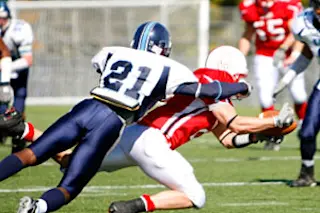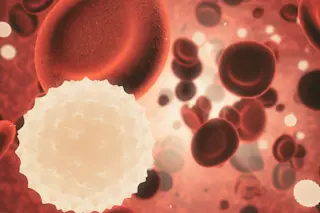See Carl Zimmer's new ebook, Brain Cuttings
, available at
, and carlzimmer.com.
Every spring the National Football League conducts that most cherished of American rituals, the college draft. A couple of months before the event, prospective players show off their abilities in an athletic audition known as the combine. Last winter’s combine was different from that of previous years, though. Along with the traditional 40-yard dashes and bench presses, the latest crop of aspirants also had to log time in front of a computer, trying to solve a series of brainteasers. In one test, Xs and Os were sprinkled across the computer screen as the athletes took a test that measured how well they could remember the position of each letter. In another, words like red and blue appeared on the screen in different colors. The football players had to press a key as quickly ...















